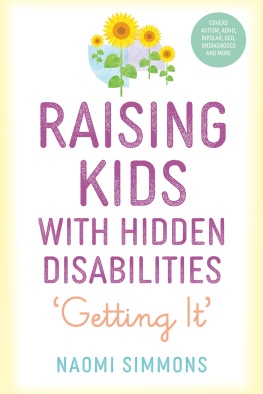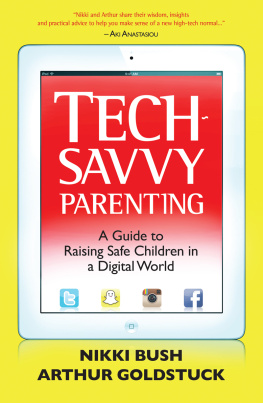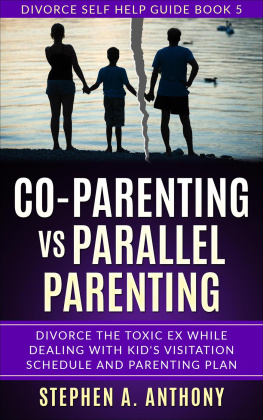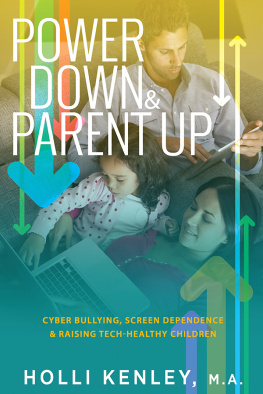Acknowledgments

I NEVER THOUGHT I would write a book about parentingat least not until my kids were grown. Its like writing a memoir at the age of twenty-five. What do you know?
The answer would be not muchif I were to draw solely on my own experience. But while my children have made the questions surrounding technology more urgent in my mind, my own family cannot provide the answers. For those, I am grateful for the help of dozens and dozens of mothers and fathers around the countryold friends, recent acquaintances, colleagues, friends of friends. I hope you see your experience (if not your names) reflected in these pages.
I am also thankful for all the experts who took the time to speak with mepeople who work in Silicon Valley, in Washington, and at universities around the country. This is a world I would not have understood without you. The input of so many teachers, principals, and caregivers has also enabled me to get a much broader view of the challenges that children and parents are experiencing today.
In terms of the structure and argument of the book, I would like to thank my editor, Susan Arellano, for her patience and feedback as well as Christine Rosen for her useful and encouraging comments.
My own experience as a mother has been made easier and better by my husbanda calm and steady voice of reason and love. Though we had different upbringings, our parents, I think its fair to say, all came to the same conclusionwhen raising kids, you cant pay too much attention to what everyone else thinks.
Though Im sure I didnt appreciate it at the time, I owe a great debt to my mother and father for that lesson and so many others. They instilled in me a love for reading and writing that I hope to pass on to my children. Though they tell me they are relieved not to have to raise children today, it is hard to imagine grandparents with deeper devotion.
Lastly, I must thank Emily for her keen observations about human behavior; Simon for his curiosity about, well, everything; and Leah for her boundless enthusiasm for the world. Spending time with the three of you makes everything clearer and happier.
Notes

INTRODUCTION
. Marie Winn, The Plug-In Drug: Televisions, Computers, and Family Life (New York: Penguin, 2002), 149.
. Ibid.
. Ibid.
CHAPTER 1
. The Common Sense Census: Media Use by Tweens and Teens, Common Sense Media, November 3, 2015, https://www.commonsensemedia.org/research/the-common-sense-census-media-use-by-tweens-and-teens..
. Generation M2: Media in the Lives of 8- to 18-Year-Olds, Kaiser Family Foundation, January 2010, https://kaiserfamilyfoundation.files.wordpress.com/2013/04/8010.pdf..
. Ibid.
. https://twitter.com/lvanderkam/status/838736552616415232..
. American Academy of Pediatrics, Media Use in School-Aged Children and Adolescents, Pediatrics (October 2016), http://pediatrics.aappublications.org/content/early/2016/10/19/peds.2016-2592..
. Hailey Middlebrook, New Screen Time Rules for Kids, by Doctors, CNN, October 21, 2016, http://www.cnn.com/2016/10/21/health/screen-time-media-rules-children-aap/index.html..
. H. L. Kirkorian, T. A. Pempek, L. A. Murphy, M. E. Schmidt, and D. R. Anderson, The Impact of Background Television on Parent-Child Interaction, Child Development 80 (2009): 135059, doi:10.1111/j.1467-8624.2009.01337.x.
. L. D. Eron, L. R. Huesmann, M. M. Lefkowitz, and L. O. Walker, Does Television Cause Aggression? American Psychologist 27 (1972): 25363.
and Their Aggressive and Violent Behavior in Young Adulthood: 19771992, Developmental Psychology 39 (2003): 200121.
. C. A. Anderson, A. Shibuya, N. Ihori, E. L. Swing, B. J. Bushman, A. Sakamoto, H. R. Rothstein, and M. Saleem, Violent Video Game Effects on Aggression, Empathy, and Prosocial Behavior in Eastern and Western Countries: A Meta-Analytic Review, Psychological Bulletin 136, no. 2 (2010):15173.
. Alisha M. Crawley, Daniel R. Anderson, Alice Wilder, Marsha Williams, Angela Santomero, Effects of Repeated Exposures to a Single Episode of the Television Program Blues Clues on the Viewing Behaviors and Comprehension of Preschool Children, Journal of Educational Psychology 91, no. 4 (December 1999), 63037, http://dx.doi.org/10.1037/0022-0663.91.4.630
. Melissa S. Kearney and Phillip B. Levine, Early Childhood Education by MOOC: Lessons from Sesame Street (working paper, National Bureau of Economic Research, Cambridge, MA, 2015), http://www.nber.org/papers/w21229.
. Eric E. Rasmussen, Autumn Shafer, Malinda J. Colwell, Shawna White, Narissra Punyanunt-Carter, Rebecca L. Densley, and Holly Wright, Relation between Active Mediation, Exposure to Daniel Tigers Neighborhood, and US Preschoolers Social and Emotional Development, Journal of Children and Media 10, no. 4 (2016).
. Ibid.
. D. H. Uttal, N. G. Meadow, E. Tipton, L. L. Hand, A. R. Alden, C. Warren, and N. S. Newcombe, The Malleability of Spatial Skills: A Meta-Analysis of Training Studies, Psychological Bulletin 139, no. 2 (2013): 352402, doi:10.1037/a0028446.
. B. T. McDaniel and J. S. Radesky, Technoference: Parent Distraction With Technology and Associations With Child Behavior Problems, Child Development (2017), doi:10.1111/cdev.12822.
. Jenny S. Radesky, Caroline J. Kistin, Barry Zuckerman, Katie Nitzberg, Jamie Gross, Margot Kaplan-Sanoff, Marilyn Augustyn, Michael Silverstein, Patterns of Mobile Device Use by Caregivers and Children During Meals in Fast Food Restaurants, Pediatrics (March 2014), doi:10.1542/peds.2013-3703.
. Kay S. Hymowitz, Ready or Not: Why Treating Children as Small Adults Endangers Their Futureand Ours (New York: Free Press, 1999).
. Jennifer Senior, All Joy and No Fun: The Paradox of Modern Parenthood (New York: Ecco, 2015), 10.
. Ibid.
Ron Lieber, The Opposite of Spoiled: Raising Kids Who Are Grounded, Generous, and Smart About Money (New York: Harper Paperbacks, 2016).
. Amanda Kolson Hurley, No, Your Kid May Not Have a Snack, Washington Post, May 28, 2015, https://www.washingtonpost.com/posteverything/wp/2015/05/28/no-you-cant-have-a-snack/?utm_term=.2399dcc336e8.
. David Finkelhor, Anne Shattuck, Heather A. Turner, and Sherry L. Hamby, Trends in Childrens Exposure to Violence, 2003 to 2011, JAMA Pediatrics (2014), http://www.unh.edu/ccrc/pdf/poi130100.pdf.
CHAPTER 2
. Tamar Lewin, No Einstein in Your Crib? Get a Refund, New York Times, October 23, 2009, http://www.nytimes.com/2009/10/24/education/24baby.html.
. Tamar Lewin, A Growing Number of Video Viewers Watch from Crib, New York Times, October 29, 2003, http://www.nytimes.com/2003/10/29/us/a-growing-number-of-video-viewers-watch-from-crib.html.
. Ibid.
. J. M. Zosh, B. N. Verdine, A. Filipowicz, R. M. Golinkoff, K. Hirsh-Pasek, and N. S. Newcombe, Talking Shape: Parental Language With Electronic Versus Traditional Shape Sorters, Mind, Brain, and Education 9 (2015): 13644, doi:10.1111/mbe.12082.
. Kathy Hirsh-Pasek, Jennifer M. Zosh, and Roberta Michnick Golinkoff, Dont Let the Toys Do the Talking: The Case of Electronic and Traditional Shape Sorters, Brookings, September 8, 2015, https://www.brookings.edu/blog/education-plus-development/2015/09/08/dont-let-the-toys-do-the-talking-the-case-of-electronic-and-traditional-shape-sorters/.
. Melissa S. Kearney and Phillip B. Levine, Early Childhood Education by MOOC: Lessons from Sesame Street (working paper, National Bureau of Economic Research, Cambridge, MA, 2015), http://www.nber.org/papers/w21229.
Next page











